Google Pixel Watch 2 vs. Pixel Watch: Should you upgrade?
Google's new Pixel Watch 2 includes many enhancements over the Pixel Watch, but should you care?
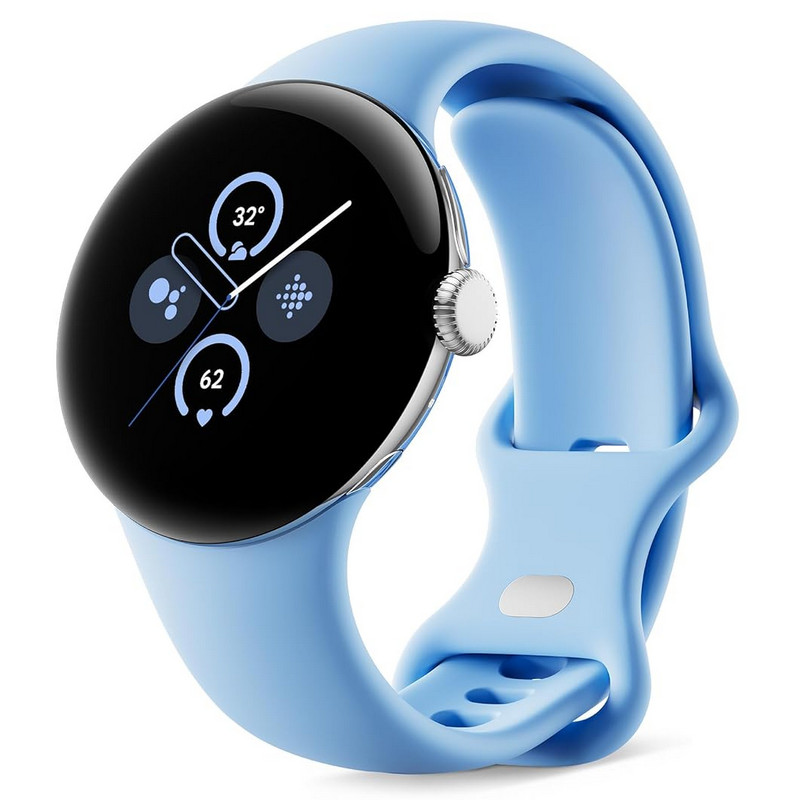
Meaningful upgrades
The brand-new Google Pixel Watch 2 gets improved hardware, better battery life, new health sensors, and more, all packed in a familiar-looking, stylish, and elegant design.
For
- Faster and more efficient SoC
- Extensive health and fitness tracking features
- Compatible with last-gen model's bands
Against
- Still comes in only one size
- No wireless charging support
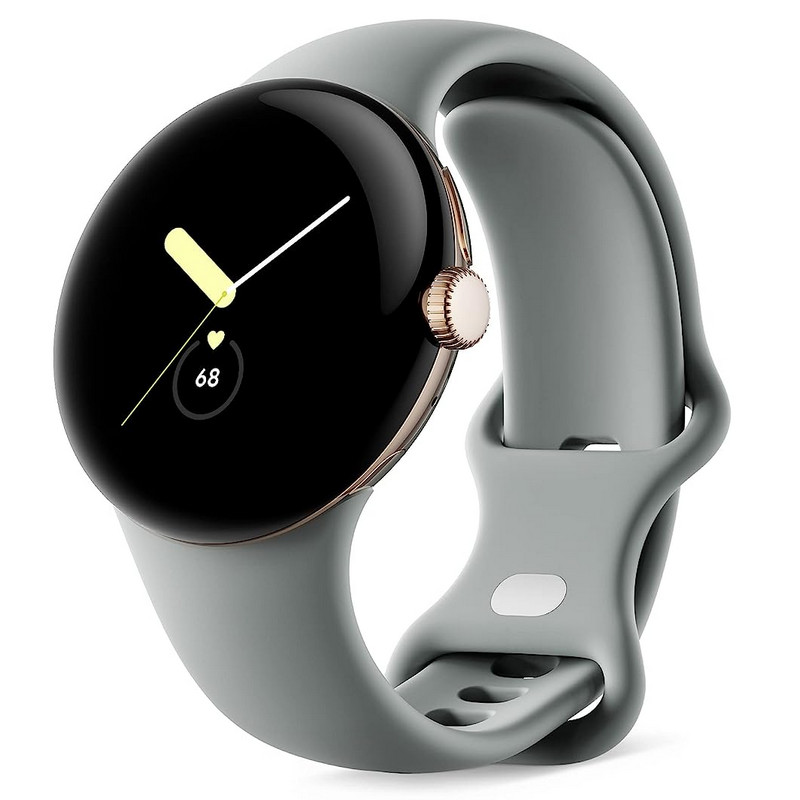
Lots of value
Now available at a lesser price, the first-gen Google Pixel Watch remains a solid wearable. It offers reliable performance, decent battery life, and a whole lot more.
For
- Premium yet durable stainless-steel casing
- Dependable battery endurance
- Update to Wear OS 4 available
Against
- Extremely old chipset
- Lacks some advanced health and fitness tracking features
Launched in October 2022 after years of delays, the Pixel Watch has proven to be well worth the wait. Although it continues to be a great option, Google's first smartwatch is no longer the newest thing out there, as the Pixel Watch 2 is already upon us. The base price is still $350, with the previous-gen model now starting at $280. As you'd expect, the sequel brings quite a few upgrades, while also carrying over some existing features from its predecessor.
So, what exactly are all these upgrades? More importantly, are they actually worth the extra cash? Let's compare the Google Pixel Watch 2 vs. Pixel Watch and find out!
Google Pixel Watch 2 vs. Pixel Watch: Design, display, and hardware
Google has left the overall design of the Pixel Watch 2 practically unchanged from the older model. That's a good thing because we think the Pixel Watch still looks stunning. The two smartwatches have the exact same case dimensions, and even the bands are cross-compatible. That said, there are some subtle changes.
While the Pixel Watch has a stainless-steel case, the newer model comes with an aluminum case that makes it a bit lighter and more comfortable to wear on your wrist. Also, the digital crown on the Pixel Watch 2 is slightly larger than the one on its predecessor and needs a little more effort to do its thing. It still has excellent haptic feedback and is accompanied by a multipurpose side button.
The displays are also exactly the same on both smartwatches. It's a circular 1.2-inch AMOLED panel with DCI-P3 support and up to 1,000 nits of maximum brightness. The screen is protected by a layer of Corning Gorilla Glass 5 that slopes downward on all sides just before merging into the case, giving the smartwatch the appearance of a smooth, rounded pebble. You also get IPX6 certification and up to 50m of water resistance.
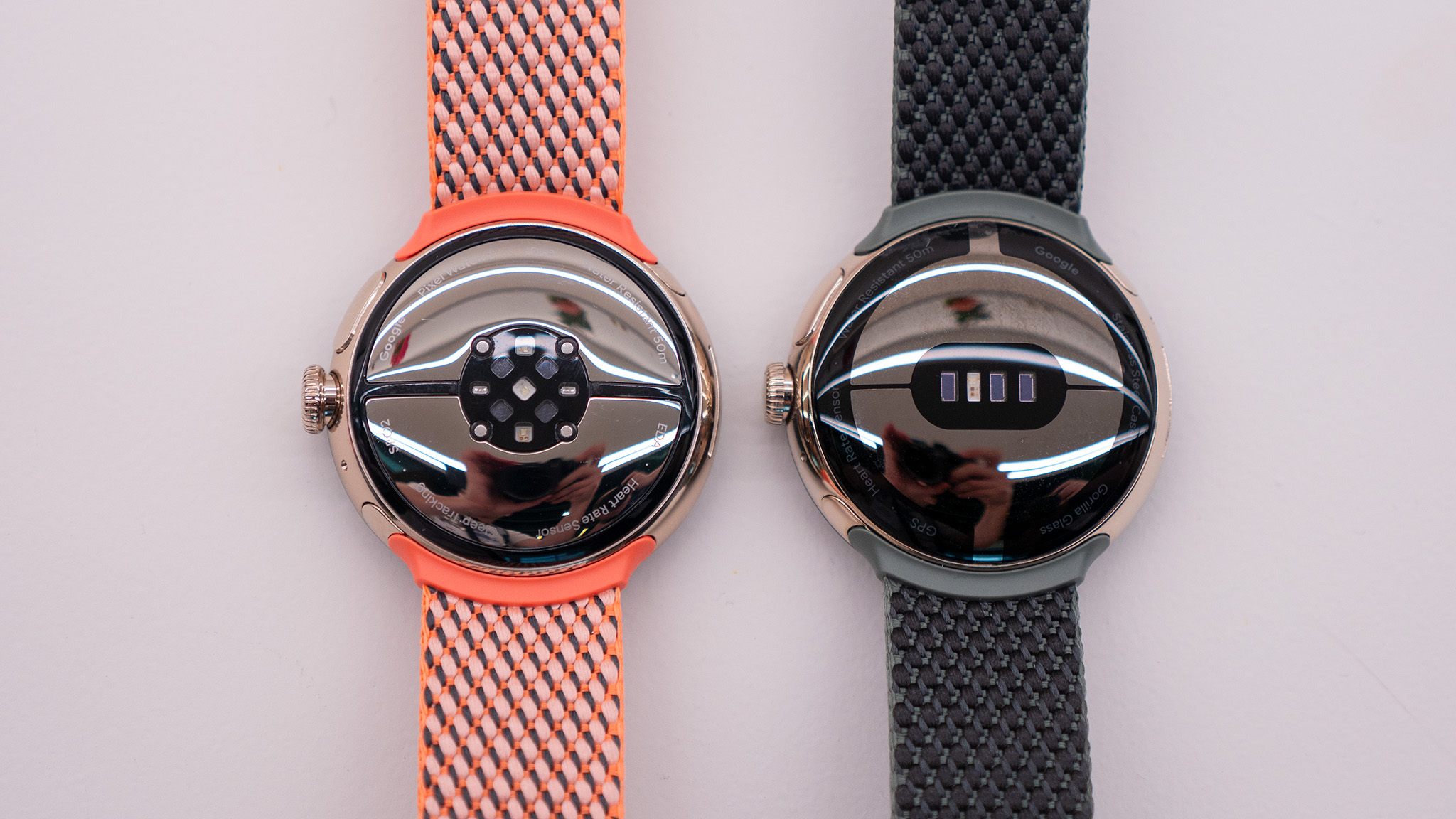
Just like its predecessor, the Pixel Watch 2 still comes with 2GB of RAM and 32GB of eMMC storage. While that's a bit of a bummer, not all of the innards are old. The latest model is powered by Qualcomm's Snapdragon Wear 5100, which is a much better SoC than the Samsung Exynos 9110 you'll find in the Pixel Watch. It should help with everyday usage, making everything from starting workouts to launching apps a much smoother affair.
| Header Cell - Column 0 | Google Pixel Watch 2 | Google Pixel Watch |
|---|---|---|
| Dimensions | 41 x 41 x 12.3 mm | 41 x 41 x 12.3 mm |
| Band Options | Two sizes (small & large), with multiple colors and material choices | Two sizes (small & large), with multiple colors and material choices |
| Display | 1.2-inch circular AMOLED with 1,000 nits peak brightness and Always-On Display. Corning Gorilla Glass 5 protection | 1.2-inch circular AMOLED with 1,000 nits peak brightness and Always-On Display. Corning Gorilla Glass 5 protection |
| Durability & Case Material(s) | IP68 certification with 50m water resistance. 100% Recycled Aluminum | IP68 certification with 50m water resistance. 80% Recycled Stainless Steel |
| Weight | 31g | 36g |
| Color Options | Polished Silver, Champagne Gold, and Matte Black | Polished Silver, Champagne Gold, and Matte Black |
| Chipset / SoC | Qualcomm Snapdragon Wear 5100 | Samsung Exynos 9110 |
| RAM & Storage | 2GB & 32GB | 2GB & 32GB |
| Navigation & Physical Controls | Touchscreen, Digital Crown with Haptic Feedback, and Side Button | Touchscreen, Digital Crown with Haptic Feedback, and Side Button |
| Sensors | Accelerometer, Altimeter, Barometer, Compass, Magnetometer, Gyroscope, Ambient Light Sensor, Multi-Path Optical Heart Rate, Skin Conductance, Skin Temperature, and SpO2 | Accelerometer, Altimeter, Compass, Gyroscope, Ambient Light Sensor, Optical Heart Rate, and SpO2 |
| Wireless Connectivity | Wi-Fi 802.11b/g/n, Bluetooth 5.0, GPS, NFC, and 4G LTE (optional) | Wi-Fi 802.11b/g/n, Bluetooth 5.0, GPS, NFC, and 4G LTE (optional) |
| Safety & Emergency Features | Fall detection, Safety Check, Emergency International Calling, Emergency SOS, and Safety Signal | Fall detection, Safety Check, Emergency International Calling, and Emergency SOS |
| Hands-Free Usage | Voice Control via Google Assistant | Voice Control via Google Assistant |
| Other | Built-In Speaker & Microphone | Built-In Speaker & Microphone |
| Battery & Charging | 306mAh with up to 24 hours endurance. Fast-charging via charging puck (with USB-C) | 294mAh with up to 24 hours endurance. Fast-charging via magnetic charging puck (with USB-C) |
| OS / Platform Compatibility | Wear OS 4 / Android 9.0 and above | Wear OS 3.5 (with update to Wear OS 4) / Android 9.0 and above |
Google Pixel Watch 2 vs. Pixel Watch: Health and fitness tracking features
Even though Google's first-gen smartwatch is no slouch when it comes to monitoring your health and fitness, its successor really takes things up a notch. In addition to the usual parameters like heart rate, sleep quality, and blood oxygen saturation, the Pixel Watch 2 can track everything from temperature to stress levels, thanks to a bunch of new sensors. The data gathered by these sensors is logged and turned into actionable insights, and it's all made possible because of Fitbit's deep integration with both the smartwatch, as well as the software that drives it.
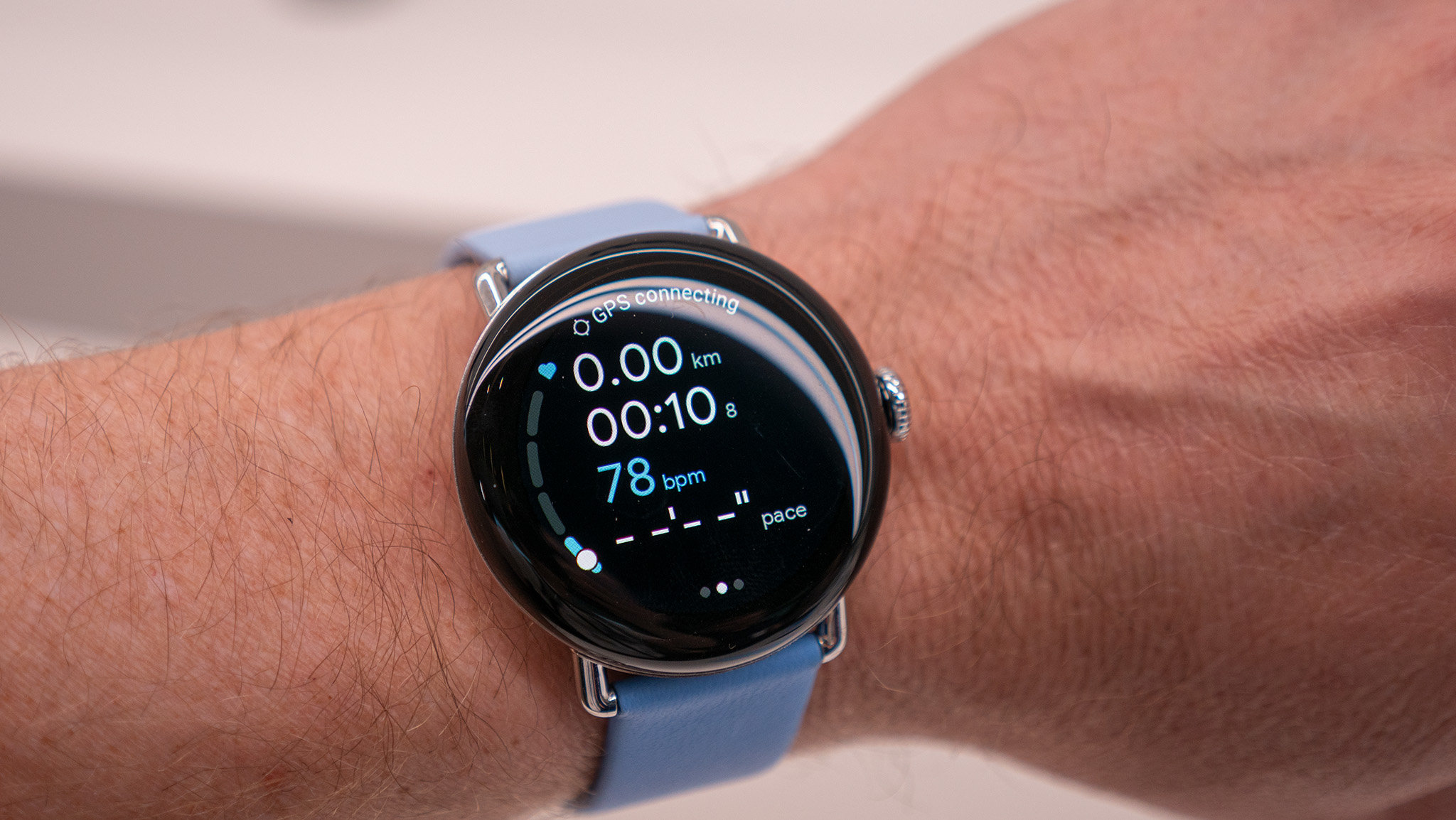
You can get even more out of your Pixel Watch and Pixel Watch 2 with Fitbit Premium, a subscription-based service that unlocks extra features such as sleep profiles and customized workouts. Both wearables come with six months of Fitbit Premium, but the subscription isn't necessary to use them.
As far as fitness tracking features are concerned, both smartwatches are pretty much identical. You get all-day activity tracking, support for more than forty exercise modes, step and calorie tracking, and a whole lot more. Some of these (e.g., pace training, auto workout mode) are only available with the Pixel Watch 2 for now, but they'll eventually come to the Pixel Watch too. All things considered, these are hands down two of the best smartwatches for fitness currently available in the market.
Google Pixel Watch 2 vs. Pixel Watch: Software, other features, and battery life
Although Wear OS 4 made its debut with Samsung's Galaxy Watch 6 series, it's the Pixel Watch 2 that gives us the real taste of Google's brand-new smartwatch-focused platform in its stock form. It packs in a plethora of goodies, including customizable watch faces, fresh official (e.g., Gmail, Calendar), and third-party (e.g., WhatsApp) apps, and the ability to backup and restore smartwatch data. That's all great, but the best part is that Wear OS 4 is now available for the previous-gen Pixel Watch, too.
If we talk about safety and emergency features, you can't go wrong with either of Google's two smartwatches. Both Pixel Watch 2 and Pixel Watch can detect falls, call emergency services automatically on your behalf, and share relevant information (e.g., location, battery level) with your chosen contacts. There's also a variety of connectivity options available on both smartwatches, including Wi-Fi, Bluetooth, and (optional) LTE.
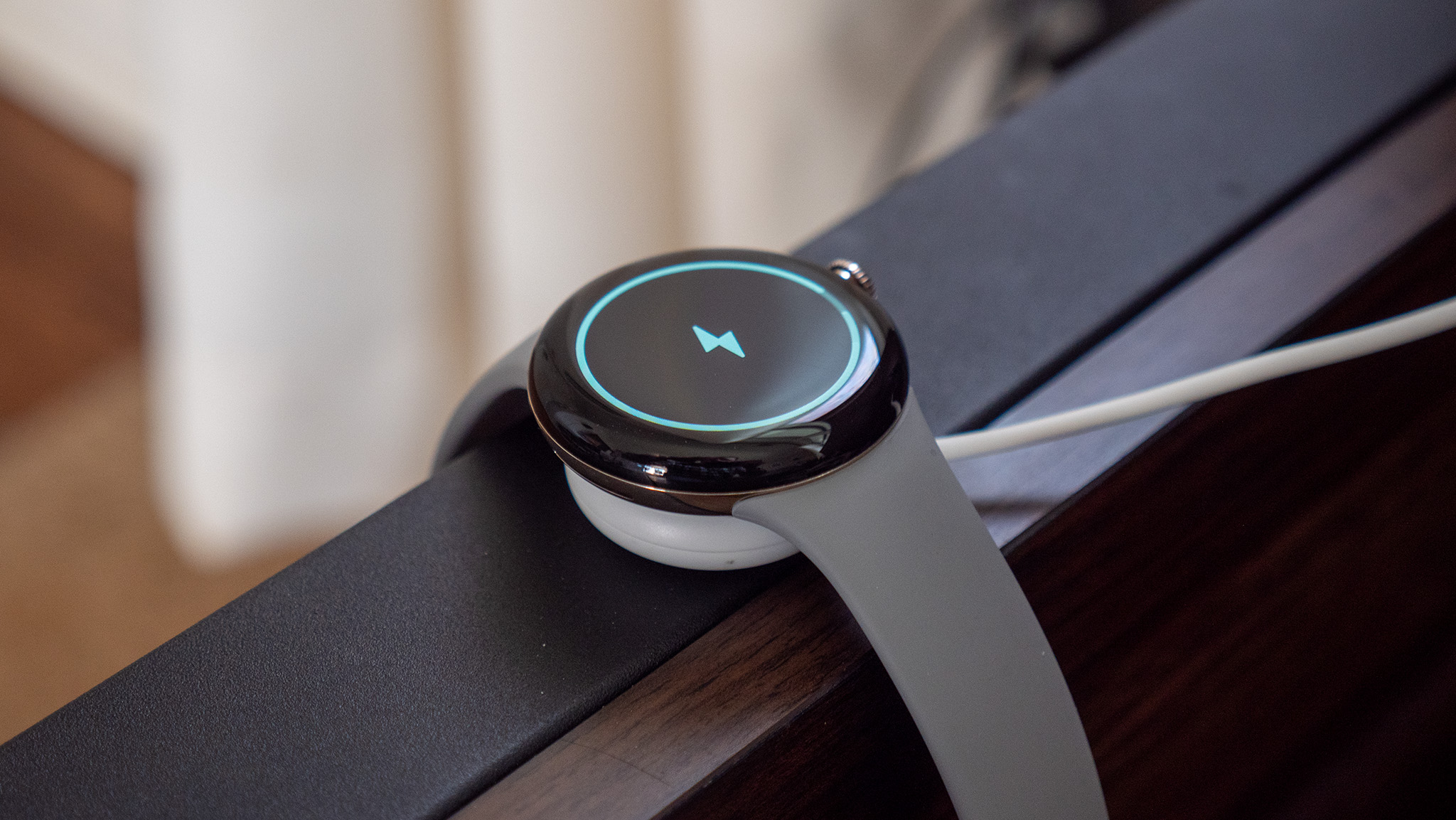
The Pixel Watch 2 has a 306mAh battery that Google claims can provide up to 24 hours of use on a single charge. We're still in the process of putting the wearable through its paces, but given that the first-gen Pixel Watch barely lasted an entire day with its less-efficient chipset and smaller 294mAh battery, we're a little nervous but hopeful at the same time.
Like the first-gen Pixel Watch, Google's newest wearable also uses a proprietary puck (that's not backward-compatible) for charging, but what's even more disappointing is that, like its predecessor, the Pixel Watch 2 still doesn't offer Qi wireless charging support. Instead, both the smartwatch and the charger now come with four metal pins — the same as the ones found in some of the best Fitbit smartwatches — that act as interfacing points for charging. That being said, both smartwatches support fast charging as long as you're using a proper wall adapter.
Google Pixel Watch 2 vs. Pixel Watch: Should you upgrade?
Google took its own sweet time, but the company (mostly) delivered with its first-gen Pixel Watch. Despite some drawbacks (e.g., older hardware), it continues to be a solid smartwatch even after a year of its launch. The Pixel Watch 2 is largely an incremental update that brings some useful under-the-hood improvements (e.g., faster SoC, up-to-date software), while keeping the overall design and experience the same. It probably won't be an exaggeration to say that these two are among the best Android smartwatches available out there right now.
Perhaps the biggest differentiating factor between the Pixel Watch 2 vs. Pixel Watch is their set of health and fitness tracking capabilities, and that's what you should take into account when making your choice. Then there's the question of upgrade vs first-time purchase. Are you in the market for your first smartwatch, or you've already had the last-gen model for some time and are thinking of going for the newest thing in town?
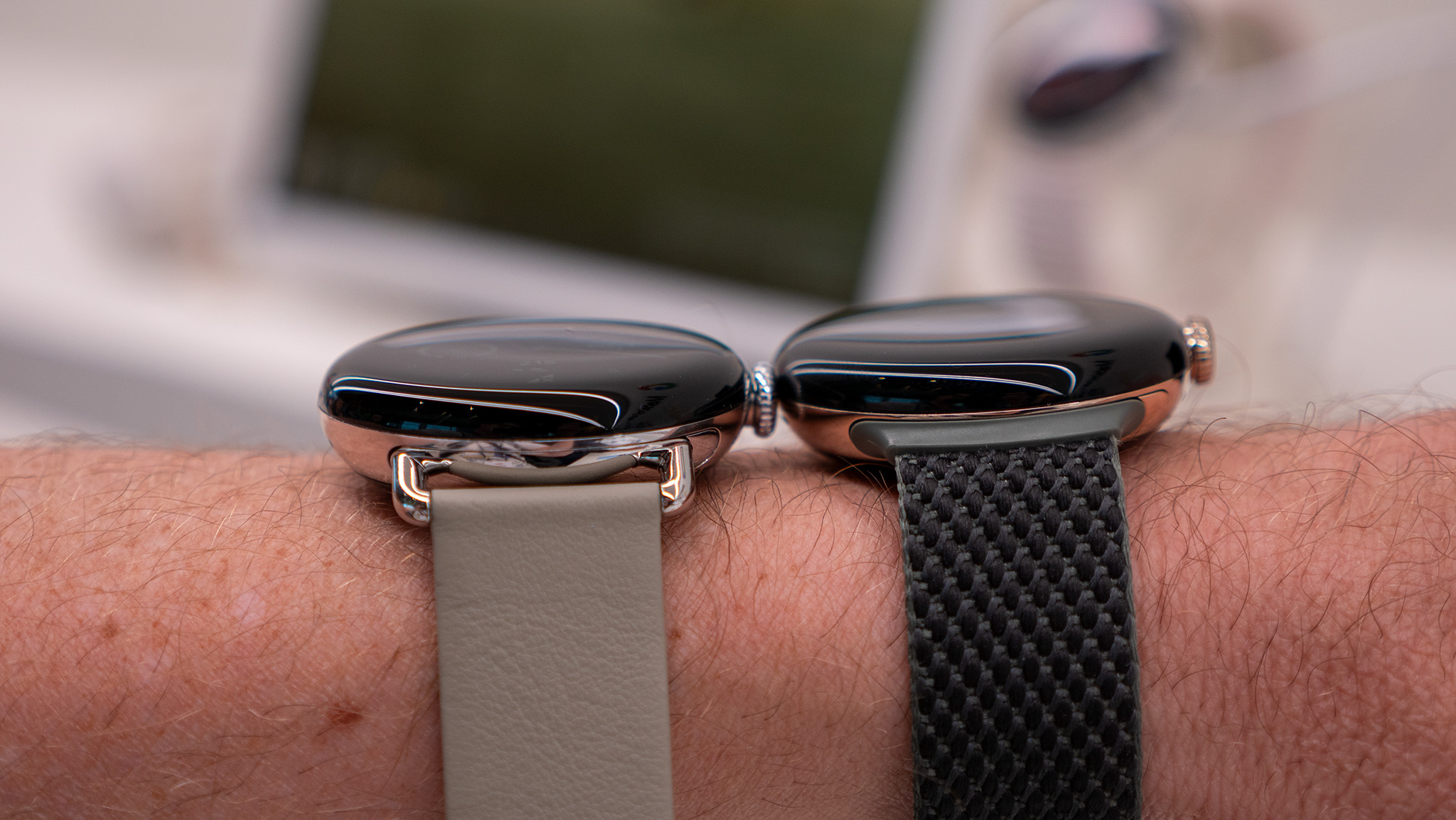
If you want a top-of-the-line wearable as your first smartwatch and don't really care about the price tag, we suggest getting the Pixel Watch 2. It offers faster and efficient hardware, plenty of ways to monitor your personal wellness, and much more. Even if you're upgrading from the first-gen Pixel Watch, you'll appreciate the little things like enhanced battery life and the freshest software version.
But what if you couldn't care less about all those advanced sensors and just want a well-rounded product at a price that's much more reasonable, even if that means waiting a second or two more when launching your favorite app(s) or summoning Google Assistant? If that's the case, go ahead and buy the last-gen model. You'll be getting a fairly decent device that does almost everything that its successor can, and also save some money in the process.

New and improved
The Pixel Watch 2 comes with better hardware, a bigger battery, and a plethora of advanced sensors, all while having the same starting price as its predecessor.

All essentials included
The first-gen Pixel Watch is a little old but still offers everything from decent battery life to the ability to track all your health and fitness metrics.
Be an expert in 5 minutes
Get the latest news from Android Central, your trusted companion in the world of Android

When Rajat got his first Personal Computer—a Pentium III machine with 128MB of RAM and a 56kbps dial-up modem—back in 2001, he had little idea it would mark the beginning of a lifelong love affair with gadgets. That fascination, combined with a penchant for writing and editing, ultimately led to him becoming a technology journalist. Some of his other interests include Photography, Hand Lettering, and Digital Typography. Rajat is also somewhat obsessed with wrist-worn timepieces and appreciates a Casio just as much as a Jaeger-LeCoultre.
